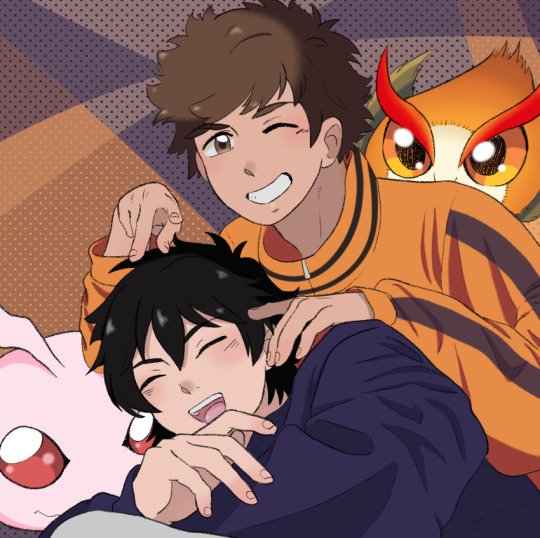#Saki Kimishima
Explore tagged Tumblr posts
Text
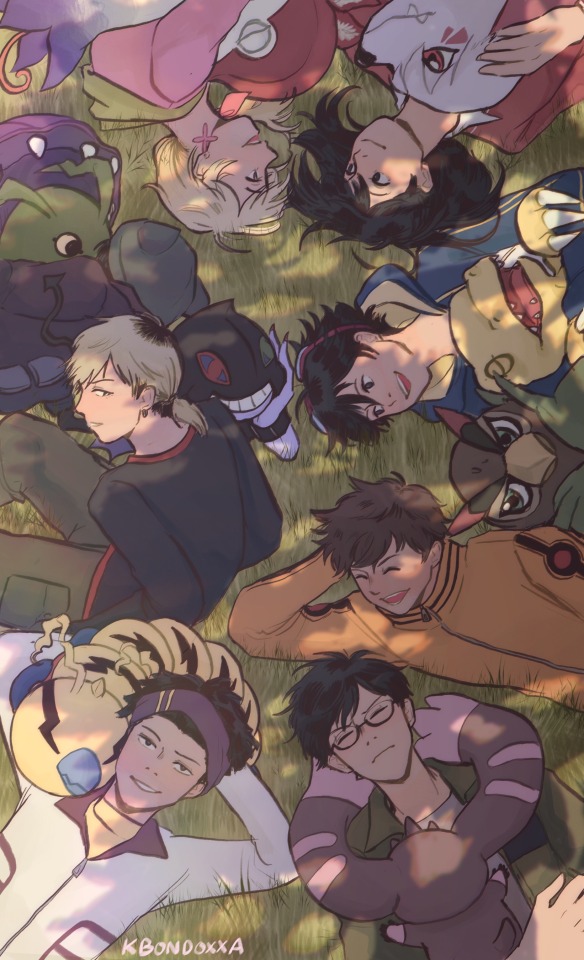
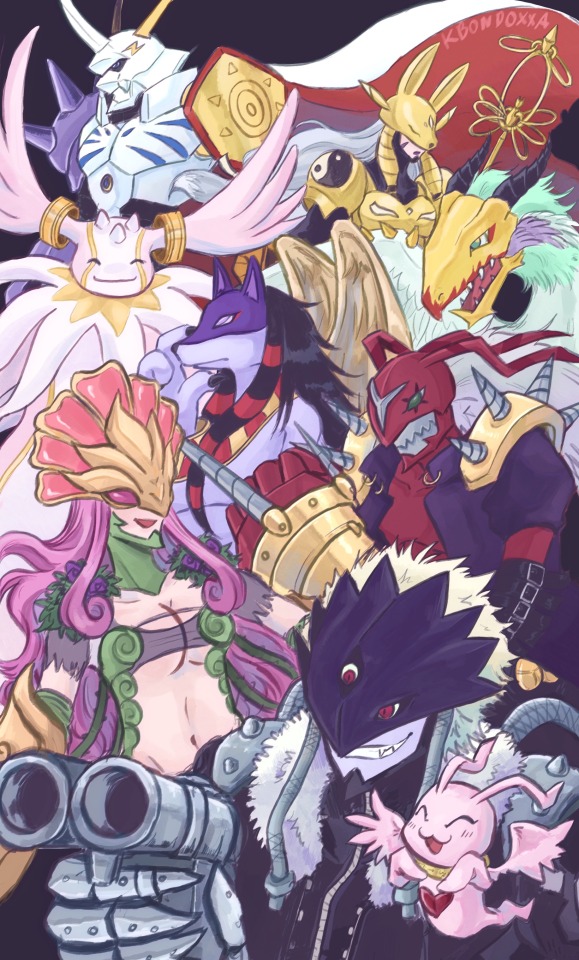
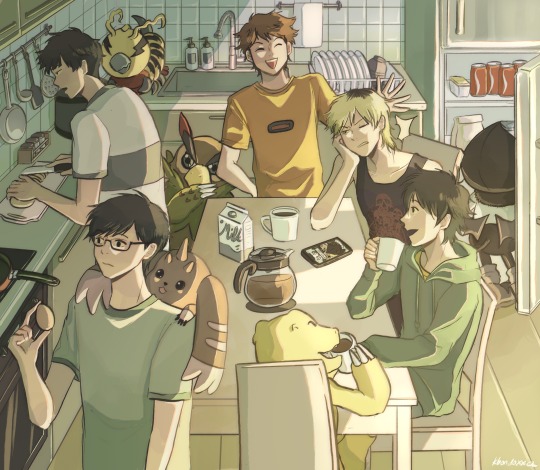

happy 2nd anniversary digimon survive! i’m sorry for no new survive artwork so i reposted my fave survive pieces ive done
#digimon#digimon survive#takuma momozuka#agumon#minoru hinata#falcomon#aoi shibuya#labramon#ryo tominaga#kunemon#saki kimishima#floramon#shuuji kayama#lopmon#kaito shinonome#dracmon#miu shinonome#syakomon
727 notes
·
View notes
Text
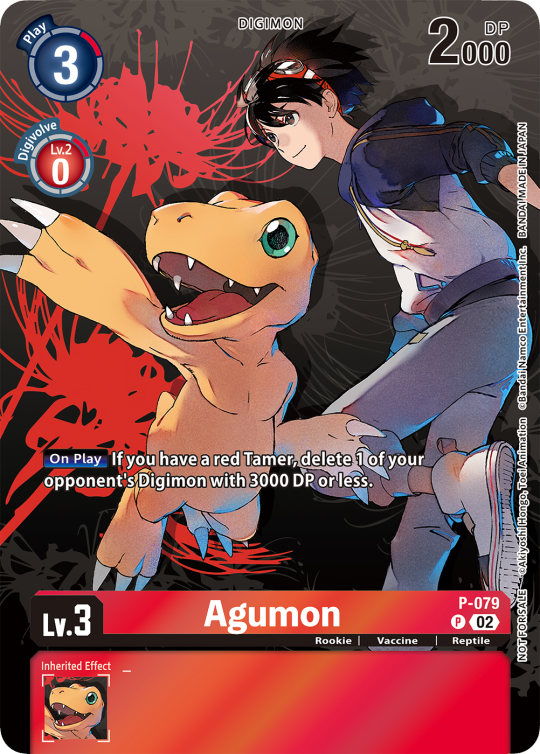
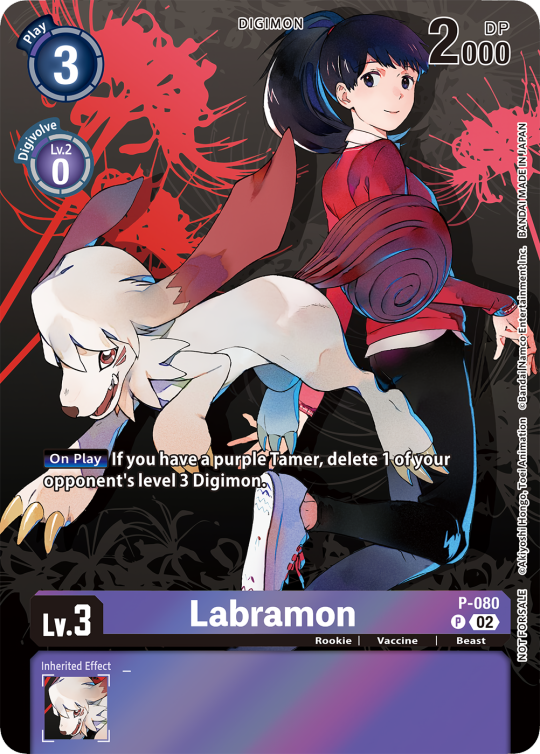
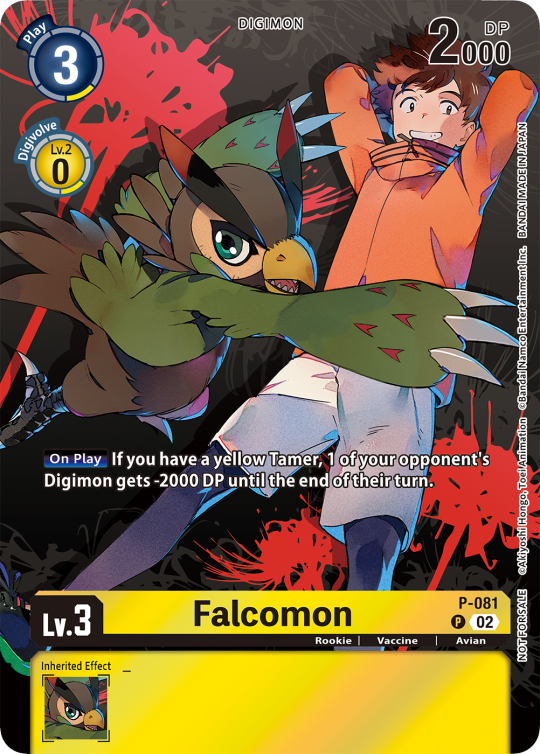
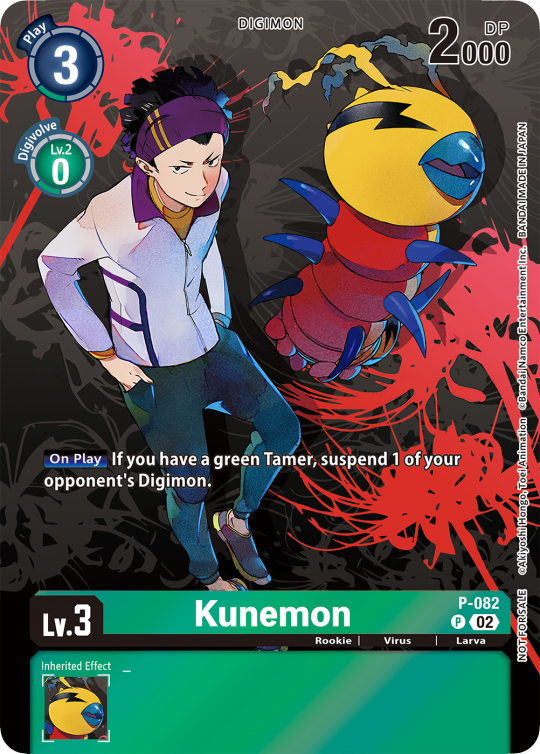
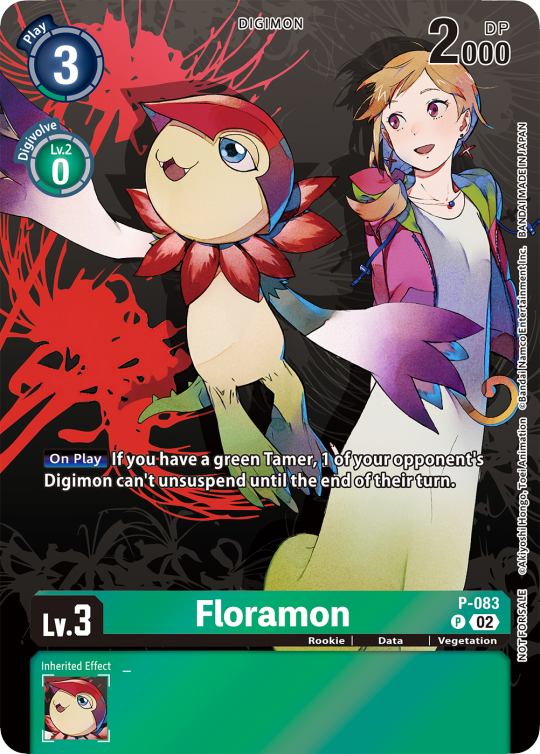
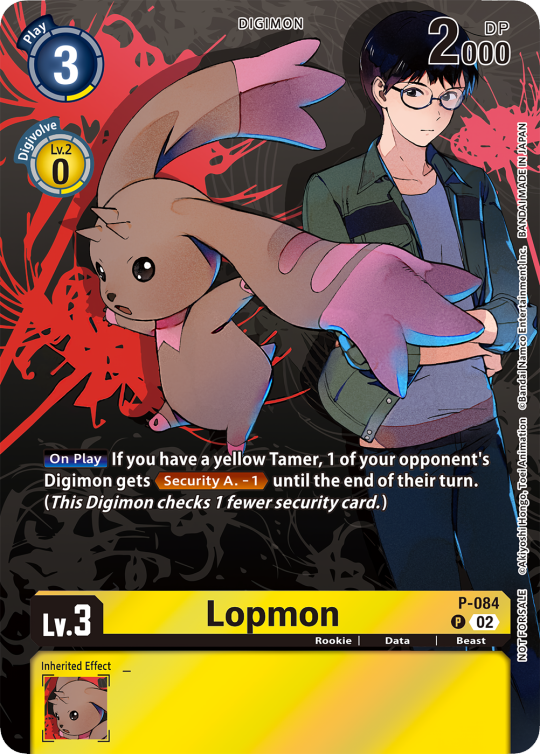
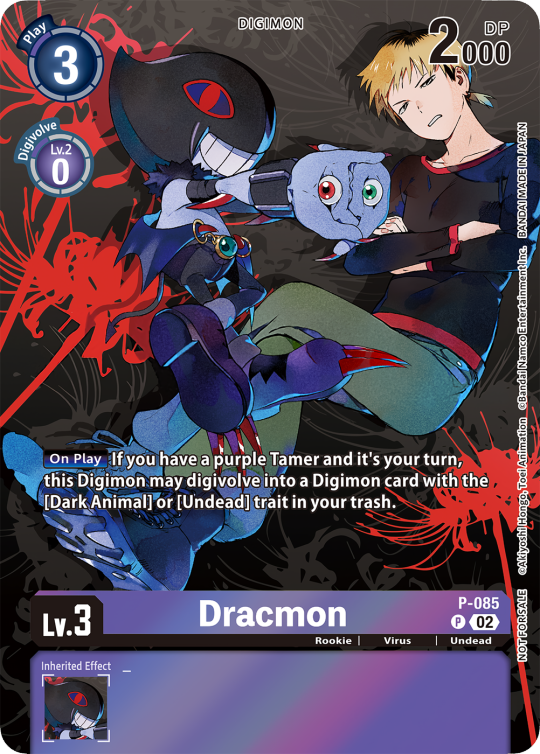
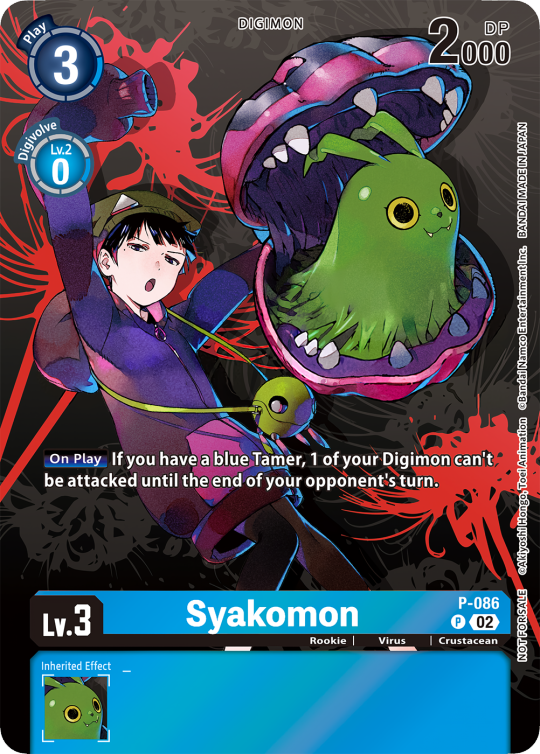
Agumon P-079, Labramon P-080, Falcomon P-081, Kunemon P-082, Floramon P-083, Lopmon P-084, Dracmon P-085, and Syakomon P-086 from the Official Tournament Pack Vol. 13 [E] / Digimon Survive Promo Pack [J]
#digimon#digimon tcg#digimon card game#digica#digisafe#デジカ#Digimon Survive#Agumon#Labramon#Falcomon#Kunemon#Floramon#Lopmon#Dracmon#Syakomon#num: 02#promo card#Takuma Momozuka#Aoi Shibuya#Minoru Hinata#Ryo Tominaga#Saki Kimishima#Shuuji Kayama#Kaito Shinonome#Miu Shinonome#color: red#color: blue#color: purple#color: yellow#color: green
449 notes
·
View notes
Text










Digimon Survive
#digimon#digimon survive#digimonedit#digiedit#userdigiegg#takuma momozuka#minoru hinata#aoi shibuya#shuuji kayama#saki kimishima#ryo tominaga#kaito shinonome#miu shinonome#miyuki#haru#professor#my gifs#edit
188 notes
·
View notes
Text
I really like their animation


#digimon#digimon survive#aoi shibuya#takuma momozuka#kaito shinonome#miu shinonome#akiharu minase#miyuki minase#ryo tominaga#minoru hinata#saki kimishima#shuuji kayama
36 notes
·
View notes
Text
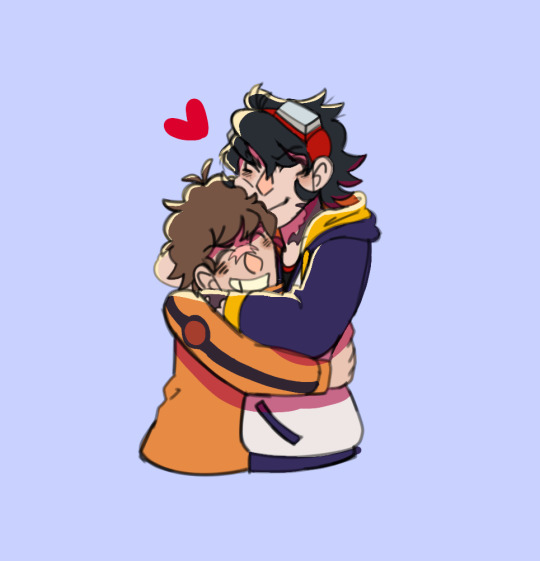
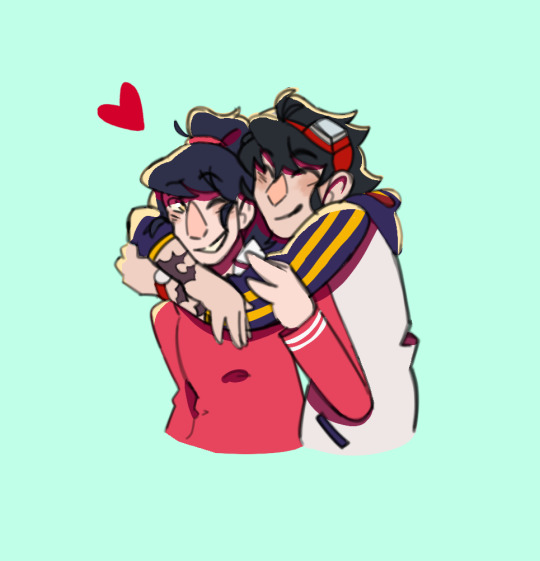



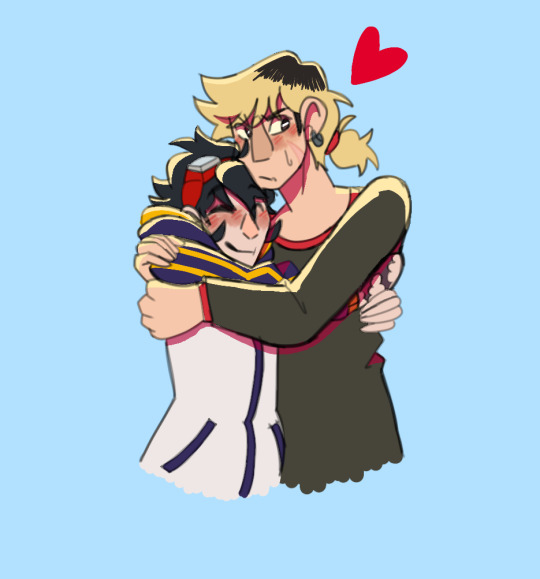
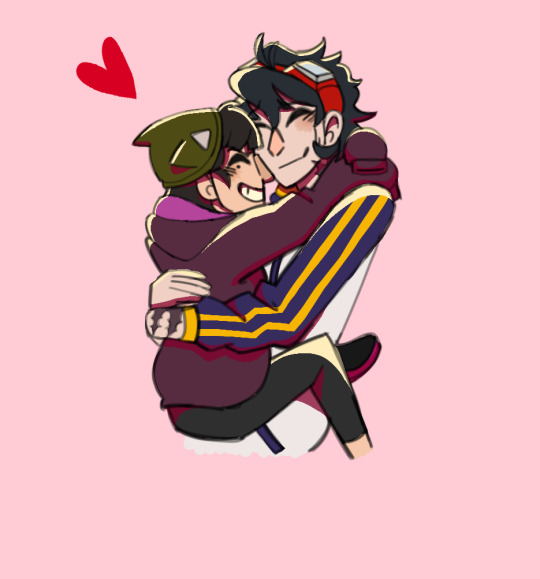
petition for the inclusion of a "Hug The Besties" button in Digimon Survive
(inspired by @manofmanymons 's post about the lack of more hugs in the game)
#digimon survive#my art#takuma momozuka#minoru hinata#aoi shibuya#ryo tominaga#shuuji kayama#saki kimishima#kaito shinonome#miu shinonome
101 notes
·
View notes
Text

saki and floramon 🌺
361 notes
·
View notes
Text
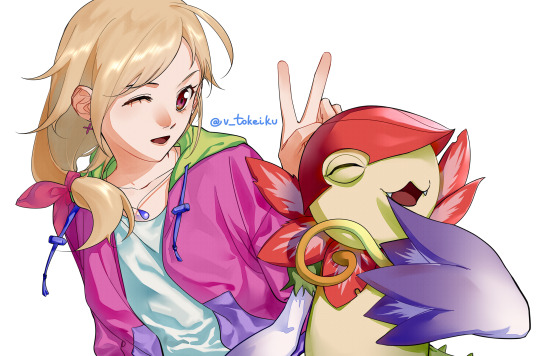
I wish I had more time to finish this amazing game...
225 notes
·
View notes
Text
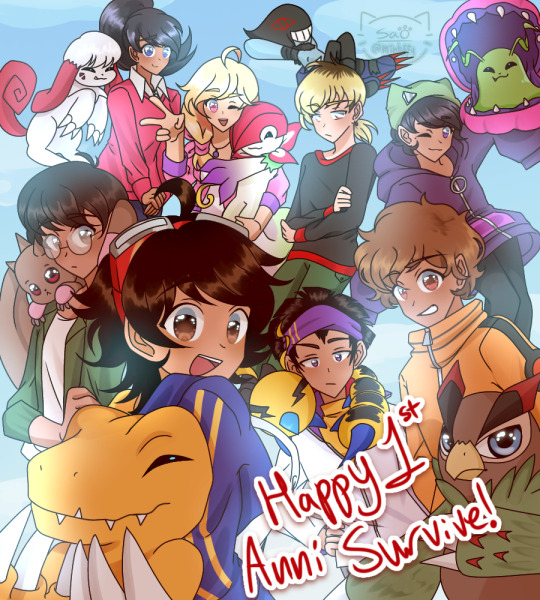
ONE YEAR OF DIGIMON SURVIVE THANK YOU FOR MAKING ME ILL
#digimon survive#takuma momozuka#kaito shinonome#minoru hinata#ryo tominaga#saki kimishima#aoi shibuya#shuuji kayama#miu shinonome#and partners idk there are so many of them#saoart#digimon
191 notes
·
View notes
Text

29 notes
·
View notes
Text

Mis dos niños favoritos del juego, estaba con ganas de dibujarlos juntitos
14 notes
·
View notes
Text

hey
189 notes
·
View notes
Text
The partnerships of Digimon Survive, part I
A little while ago, a friend sent me this post talking about what the partnerships in the adventure-02 verse reveal about the kids' character and asked me if I'd be interested in writing something like it for Survive. I happily obliged, and this is part one on the subject (as of right now, it's about 60% done and it's at 6432 words, so in the interest of keeping the post readable...)
Spoilers for everything.
CW: Child abuse, since this part contains Shuuji's section.
As explained in this interview on 4gamer, for Digimon Survive, the staff drew from Digimon lore established in Adventure— namely that the partner digimon are “spiritual beings” who are the kids’ one and only partners, part of the kids' own being and responsive to their growth. Generally speaking, Habu and the staff decided on the human characters’ background first and then picked a digimon that fit them so that there would be synergy between their behavior, general storyline and the partnermon’s personality and evolution paths. The one exception to this process being the main character himself, Takuma.
Takuma and Agumon
As revealed in that same interview, Takuma’s partner is Agumon because Agumon is a popular digimon that most fans will accept (60% of players answered they wanted Agumon as a partner in the player survey they conducted asking “Which Digimon would like as a partner?”). Thanks to this popularity, Agumon has a lot of possible evolution paths established that can show the range of the different routes and reflect on Takuma’s status as player character, which makes his behavior flexible and respondent on the player’s decisions. However, it’s also thanks to Agumon being the franchise’s mascot that he’s also got a fairly well defined personality, and Takuma himself is consistently characterized despite his main-character condition.
Generally speaking, Agumon is mostly portrayed as an easy-going and straightforward digimon who wears his heart on his sleeve and is adept at following his instincts into battle. He’s often seen acting on noble and heroic impulses, which might seem to contrast him to Takuma. After all, Takuma is a bit of a wimpy kid who’s constantly fearful during his stay in the kemonogami world; which is quite apparent the moment they meet: even though Koromon is a baby— and thusly exhibits a healthy amount of caution in approaching Takuma— he’s still the one to approach him, much to Takuma’s dismay. This open courage is reinforced through the fact Koromon jumps to the task of protecting Takuma against Gotsumon, despite being very obviously weak.
The apparent gap between the two continues through the game: where Agumon will freely admit his emotions and general ignorance, Takuma appears more withdrawn and thoughtful, always weighing what would be the best thing to say and how the others might react or be feeling. Let’s not forget, however, that the partermon acting as mirrors to the kids might mean that either they’re showing an aspect to their hearts that is not as easily accessible/obvious or show the areas where they have to grow. Both of these aspects are true for Takuma, as he does grow to be braver and willing to face the challenges the world throws at them — this is especially apparent during the ultimate evolution scene for the Truthful route, where he boldly proclaims their desire to fight and save the kemonogami world. Additionally, Agumon has been portrayed as someone with great emotional insight before, which does fit Takuma to a tee. Takuma’s inner monologue evidences how in touch he is with his own emotions and how adept he is at imagining how others must be feeling. Therefore, Takuma’s deeply emotive nature not only shows in his fear-induced paralysis but in his primary function in the group as their caretaker. He looks after the others because he is quite sociable and reasons primarily through emotion, much like Agumon. He doesn’t really investigate the nature of the world intellectually like Shuuji does, nor gets bogged down about fulfilling his duties the way Aoi does, but acts based on his instincts.
Furthermore, Takuma is usually shown unable to propose pragmatic plans, doing better at listening to the others and weighing in based on the mood of the group— this matches Agumon’s own obliviousness and inexperience about the world as well as his naivety. Because Takuma isn’t prone to thinking logically, he often fails to plan ahead and usually only faces things as they come. His go-with-the-flow attitude is best observed during the prologue, and it’s this flexible demeanor what allows him to get along with just about anyone. This can also make him quite naive, as it’s shown when he’s on the fence about believing the Mysterious Woman, unlike the harsh paranoia Kaito exhibits or the reticence from his seniors.
Because Agumon and Takuma are actually so like-minded, Takuma is able to rely on Agumon to sort out his feelings and worries, as seen in the way he asks Agumon for advice in the same way the others do of him. Agumon is able to service him with the unwavering, comforting support Takuma needed to be able to step out of his comfort zone and become bolder. Their philosophical talks show that Takuma is also able to question how to best approach others and his own morality through their partnership (and denying their bond leads Takuma to his most morally bankrupt during the Bad Ending). They’re so in-tune with each other that they’re one of the few pairs that don’t fight during part 6.
Aoi and Labramon
Labramon’s introduction is likely one of Survive’s most comedic bits. Where Aoi shows herself gentle and worried over Minoru’s well-being, Labramon is harsh and downright crude to him. They might be one of the pairs that feel the most “mismatched”, given the fact that Aoi’s speech remains ever polite and friendly contrasts to Labramon not being afraid of speaking rudely and bluntly to others. This gap in speech is subtly bridged in part 5, when we find Aoi’s CD. She talks about liking old rock songs and relays her favorite lyrics to Takuma:
自分の決めた道を行け 邪魔する奴らを蹴散らして
The lyrics feature aggressive and colloquial speech, from the scornful third-person pronoun 奴ら and the quite informally contracted verb form. It’s quite telling it’s a lyric about following one’s path and crushing whoever opposes it. The sentiment and speech feel quite fitting for Labramon, and thus, we’re clued in that her waspish demeanor is a reflection of Aoi’s well-hidden and repressed resentments. Arguably, it’s because Aoi is so reluctant to show her anger or grievances that they fester and Labramon shows them disproportionately. Once she starts becoming more assertive, Labramon earnestly starts showing other of her emotions— as seen in the affinity dialogue in Truthful’s part 10, when the group is saying their goodbyes to depart the amusement park, Labramon wants to relay Aoi’s honest concern for its denizens directly to them. This push for Aoi to express herself openly it's a recurring theme through the talks between them. Additionally, Labramon is more openly meddlesome, affectionate and prideful, which shows the range of emotions Aoi keeps under wraps.
The CD scene is not the only case where their energies match, as we get to see when Aoi gets heated and quells Shuuji and Kaito during their fight in part 4 (and later again, with Kaito, when she wants to handle the toddler digimon at the park). This is also shown when she ardently jumps to Saki's defense against the fake Floramon in part 5. Despite her seemingly docile persona, Aoi is actually quite passionate. This is something we will see expressed more intentionally and consistently (as opposed to her early outbursts) when she grows to embrace this side of herself and her position as their leader, particularly during the Moral Route (Wrathful shows a warped expression of this development since she's not only at her most destructive and wanton— she’s also the least honest she’s ever been: hiding behind machinations, deceit and passive aggression and doggedly maintaining her outer politeness).
Aside from reflecting her desire for aggression and true emotions, Labramon and her evo line also fit to a tee Aoi’s devoted sense of duty. From Labramon’s official profile,we can glean she’s a digimon with a duty. Being an artificial digimon means she was specifically created to fulfill a function, which is further cemented by the fact she’s a literal living vaccine program. Her only skill movement in-game being Cure Liqueur fits Aoi’s own first-aid skills, which are promptly demonstrated when she patches Labramon up in part 1. Dobermon takes this a step further being a digimon whose only purpose is to hunt viruses. This adult stage marks the start of a consistent theme in the evo line about harnessing monstrous power in order to fulfill one’s duties, much like Aoi needs to embrace assertiveness and authority to be able to properly respond to the situations before her and achieve her goals. This is made as textually explicit as it can be during the Cerberumon evo scene, where they remark upon the ferocious shape Aoi’s desires took in this perfect stage, and she openly admits her desire for power— power as having the agency, authority and self-confidence to assert herself—. Cerberumon’s words encourage her not to be afraid of using this latent power already present in herself and to keep a just heart to wield it fairly. Anubimon is the judge of the dark area, who weighs over fallen digimon’s data to either banish them forever or grant them the chance of rebirth. Its role as a fair judge relates to Aoi’s role as a leader who listens to everyone’s input so everyone can reach either a unanimous decision or call for a timeout so the group can put their feelings back in line. Anubimon as a possible endgame for her also foils her corruption arc that leads her to become Plutomon, given both are underlined by the fact she has embraced the authority and power inherent to her social positions and is proactively preserving Harmony, albeit with completely different ethos.
Labramon will consistently encourage Aoi to be more confident and tackle the challenges before her, as her evo scenes and general demeanor evidence. For this reason, Aoi regards Labramon as someone who is as assertive and reliable as she should be, while keeping a really poor opinion of herself. This is at the core of their conflict in part 6, where she worries about what exactly she gives back to Labramon, who's so capable already and has to support her in everything she does. Because Aoi is very stubborn and her beliefs are deeply held, it's difficult for her to internalize the positive feedback Labramon and the others offer her. She admits as much when Takuma mediates between the two, and she promises to work on her inner monologue to be able to treat herself as kindly as Labramon does. This open-ended journey for her to deal with her self-loathing plays a big role in her endgames. Where in Moral she's able to trust the group and delegate —thus managing her workload and stress— ultimately getting the support she needs on her ever on-going journey to assertiveness, in Wrathful she becomes consumed by her self-loathing. So much so, her desires to become a better version of herself and her view of Labramon as the better half are crystallized into becoming Plutomon (think of her dialogue when she explains who she is now: "Aoi? No, I've cast off that weak persona. I'm Plutomon."). Arguably, Labramon being utterly loyal and devoted to Aoi to the point she'd sacrifice herself for her—and the Biomerge only featuring Aoi's voice, signifying Labramon has been consumed— also show the toxic pitfalls of Aoi's scrupulous work ethic. In this way, Labramon and the different outcomes of her evolution line perfectly encapsulate Aoi’s self and possible growth.
Ryo and Kunemon
One of the things that stand out the most about Kunemon is the fact he's unable to verbally communicate (although the other partnermon are able to instinctively understand him). Secondly, are the knee-jerk reactions his presence receives— namely, the disgust and rejection due being "creepy" and "scary" (mostly coming from Ryo himself). This is likened to Ryo in a rather blatant manner via Saki's remark after his death in the vanilla route, where she comments about his loneliness and trouble expressing himself. This sense he's icky and insignificant plagues Ryo before he attends the spring camp— which is made the most clear in his prequel story, where he's sharply aware his behavior is repulsive, and so he wishes to attend camp to avoid the rejection from his classmates and in order to make friends.
The similarities between Ryo and Kunemon's communication styles don't end in their difficulties: in order to get across his support for him, Kunemon will make Ryo gifts and punch up his behavior in order to give away his feelings through his body language. Much in the same vein, although with the antisocial intention of preemptively shielding himself from others, Ryo overplays his posture and facial expressions to look tougher and cooler than he actually is. On the uptick, when Ryo wants to put his best foot forward, his main ways to get integrated into the group comes in the form of helping Aoi with cooking, supporting Shuuji and helping mediate the group discussions (even if his speech remains as rough as ever). Kunemon shows early on, even when he was completely unhelpful and uncooperative, Ryo's hands-on approach to caring for others. So hands on that, words failing, both will rely on getting physical to snap others out of dangerous situations…
Kunemon's care for Ryo is epitomized when he pushes him out of the way and prevents him from walking straight to the Kenzoku. This opens Ryo's eyes to the way he's been cared for not just by Kunemon, but by Takuma and the group. Through Kunemon's love for him, he's able to accept the support others are able to offer him, instead of assuming the worst of them by default. This makes it possible for him to start looking to integrate into the group. Kunemon helping Ryo's social reinsertion is made apparent in the theme of loyalty running through his evo line, where Ryo proudly proclaims he will stand by his side come what might. This attitude very much mirrors his shift from paranoid doomerism to being on board with whatever the group decides in order to stay with them (as he puts in to Takuma in part 5) and his drive to protect and help Miu and Shuuji. Additionally, his ultimate evolution, BanchoStingmon, is all about pride and confidence, which is a far cry from his degraded self image Kunemon initially reflected.
Kunemon's lack of speech also externalizes Ryo's sense of isolation. Takuma notes that even though he's unable to understand Kunemon, Ryo is perfectly capable of communicating with him. Amid his feverish distress, Ryo speaks nastily to Kunemon: he remarks that nobody is listening to what he has to say. This, again, has a rather obvious parallel to the way Ryo feels his worries dismissed by the group. His sense of neglect runs deep, as he was not allowed to see his mother in favor of keeping up with normal life, despite how much it obviously affected him. Likewise, Ryo's angry remarks that Kunemon is weak and useless for not being able to speak reflect the way he feels about himself; during the search for Shuuji and co. in part two, should the player decide to check up on him, Ryo will straight up say in a self-deprecating manner that if Takuma needs him, he will be useless and in the way as usual. As much as Ryo's self-awareness makes him deeply self-conscious in the first stretch of the game, it also makes him keen and the only one in the group not to be tricked by the doppelganger partnermon— he's perceptive enough to detail and his own internal nature to be able to instinctively understand Kunemon, and, as such, it's impossible for him to mistake him among the shadows.
It is to be noted, however, that Ryo's ability to communicate with Kunemon fluctatues, as shown in the JewelBeemon evolution scene. In it, Ryo laments that once he panics, he stops making sense of Kunemon's words and resorts to solving things by force. Given his perfect evolution scene also uses training as shorthand that Ryo is working on himself continously, it could be taken to mean his own disposition to communicate is a work on progress. Just like he mantains his relationship with Kunemon through crafting objects for his needs and remaining calm to understand him, he needs to cultivate the same disposition towards the group.
Saki and Floramon
Saki and Floramon are a very like-minded pair, sharing a sociable, carefree, cheerful and optimistic disposition. So much so, Saki actually remarks that sometimes talking to Floramon is like talking to herself. Whenever Saki gets irked by Takuma’s fenceriding or overall tepidness, Floramon matches her indignation and openly expresses the desire for Saki to be protected or for the situation to be taken care of. While this bluntness is seemingly in line with Saki’s character —let’s remember the first thing she does upon arriving at the school is demand a different room for the girls— it's actually a point of contrast between the two.
Despite appearances, Saki's actually very discreet about her needs and won't voice them until she has no other recourse — in the case of pt4, until she literally couldn't keep going during their trek to the amusement park. She's generally really cagey to talk directly about her illness. She reacts strongly to feeling exposed when Takuma finds her medical chart in part 5, getting flustered and diverting attention from it via calling Takuma a pervert for prying, which creates an awkward atmosphere that prevents Takuma from snooping any further. In general, her affinity dialogues favor answers that reassure her without pressing her to talk directly about her illness and the troubles it brings— think about her affinity dialogue in part 7 before you enter the factory, where she vaguely explains to Takuma she might be unable to see the others for a while after a camp, and the best answer is to reassure her you'll stay friends without asking for clarification. This avoidance underlines Floramon's evolution line, with Vegiemon using underhanded tactics to get ahead others (not unlike Saki’s trait of knowing exactly which buttons to press to be liked, deflect or get what she wants—the latter especially apparent in her prequel story); Blossomon having a timid and reclusive disposition that'd rather avoid fights (which mirrors Saki's own reluctant posture with regards their conflict against other kemonogami); even Ceresmon Medium rarely lets herself be seen in order to avoid fighting and adopts more of a support role. Furthermore, Vegiemon is typically a neglect evolution born out of care mistakes, which finds a clear parallel in Saki postponing her medical treatment, but also the way she tries to push herself to keep up with group and what she wants to do, even if it's dangerous for her.
Floramon being more straightforward about expressing Saki's needs and desires to be taken care of and/or reassured means she embodies Saki's most authentic self, unburdened from social rules and her fears of rejection. While Saki might maintain the secrecy about her condition, this isn’t something she necessarily wants to do as much as something she feels she needs to. This is shown in the flippant way she lets Takuma know about her sickness in part 9, without necessarily wanting to talk deeply about it but to have the freedom to bring it up without fanfare. Floramon’s uncomplicated demeanor allows Saki to honestly engage with herself, as seen in the Vegiemon evolution cutscene. When Saki is too caught up in her head about the honesty of her intentions— how much of her actions stem from genuine feelings vs following the course of action she knows will get her to be liked— Floramon encourages her to stay in touch with her heart and not overthink it. This facilitates her endgame of a self-acceptance that isn’t completely predicated on the whims of external validation, as shown in her Moral shadow event.
Her relationship with Floramon also pushes Saki to tackle conflict in a direct and considerate way. One of Saki’s long-running preoccupations concerns whether she’s selfish or not. In the first half of part 3, when they talk about Ryo, Takuma assuages her by saying she’s not because he notices her keenness can lead her to be very mindful of those around her. However, this behavior can also lead her to be two-faced, as seen with how she treats Floramon at the start of part 6. Her conflict with Floramon involves not only the reassurance of Floramon’s unconditional support and protection, but also calls her to confront how her avoidance can be self-centered and hurt others, which is another cornerstone to Saki’s arc: to learn to engage with conflict honestly.
Shuuji and Lopmon
This pair wins the dubious award of Most Troubling Partnership, with Shuuji’s rejection of Lopmon being downright abusive. During the Digimon Con 2022 livestream, Habu alluded to the nature of their relationship by saying that because the digimon are the other half of a human soul, hurting your partermon is a form of self-harm. And so, Shuuji’s treatment of Lopmon corresponds to the way his own internal monologue plays out, which is made apparent in the self-depreciating way he speaks of himself when he’s breaking down in the waterways. This passage in the game also highlights Shuuji is mainly motivated to gain his father’s approval and his subsequent despair over not getting it and being rejected— which has a clear mirror in Lopmon’s overall pitiful, fawning disposition (and by his own admission that he desired for Shuuji’s praise in the Turuiemon evo scene). Lopmon will lament and wonder about why he’s the only one who’s despised much like Shuuji will wail about being the unbecoming son and frantically ruminate over what he’s doing wrong. It’s clear then that Lopmon reflects Shuuji’s most vulnerable and frail feelings as a defenseless child against parental abuse, which is further reinforced by Lopmon’s small, frail build and his helpless yet attention-starved demeanor.
Lopmon consistently reflects Shuuji’s most frail and unflattering stress responses in the way he cowers and cries whenever the situation gets too much. Shuuji himself is shown panicking and freezing plenty of times— starting by how genuinely overwhelmed he gets in the prologue when having to choose the best course of action before crossing the tunnel: whether to let Aoi and co. tag along or not. Despite the ways he tries to lead Saki with an iron-fist during part 2, he quickly sinks into his overwhelm and fear from being chased around. Not to mention that he straight up wailed the same as Lopmon at the cable car. Despite Shuuji’s ugly behavior muddling the situation, Lopmon and Shuuji are actually very painfully alike, so much so that they’re the first ones to note how they’re always thinking and experiencing the world in similar ways after they come out of the tunnel in Truthful. Even Shuuji’s worst eventually finds its expression in Lopmon when he dark evolves and embodies Shuuji’s sorrow and anger in the most destructive—and suicidal— way possible where he literally cannibalizes his other half, after being broken down over a really agonizing slow burn, much like Shuuji became who he is after enduring his own abuse for a long time.
Lopmon mirrors Shuuji’s experience not only through his reactions to it, but in the way their scenarios are crafted to begin with. From being reprimanded for lagging behind during the hike in part 4 and told to keep pace despite his small body, to being berated for being unable to explain himself properly in part 5 during the restroom scene, the scenarios very intentionally evoke common experiences children in abusive households will go through, down to having Shuuji’s speech match the way said parents speak to their children. Shuuji’s mistreatment of Lopmon not only is allegorical of his self-hatred and self-harm, it actively shows you the abuse he has had to endure and how he excuses it and reproduces it— because he’s not good enough, his father’s berating is only done so he can improve just like he is cruel to Lopmon to toughen him up and mold him into the imposing leader/monster they should be. It’s a chilling and effective portrayal of verbal abuse and how deeply felt and noxious its effects are, despite not being as obvious to portray as physical abuse.
On the uptick, Lopmon’s demeanor will change when Shuuji finally accepts the mistreatment wasn’t warranted. Being able to recognize Lopmon only ever did his best and didn’t deserve to be put down for it serves for him to be able to internalize that truth for his own self, and start seeing value in the traits he loathed so much about himself. To look at himself with the capacity of love and kindness, even if previously it had been impossible for him. With his newfound resolution to live not for external approval —and this is enabled because Shuuji knows he doesn't have to grovel for it anymore, given that the group wants to support him even when he has hit rock bottom—, but to be able to make his own self proud and live without regrets, Lopmon’s own behavior relaxes and becomes more serene and braver. Lopmon’s evo line reflects Shuuji’s need to hone a calm, disciplined spirit (in contrast to his earlier emotional outbursts) in Turuiemon; his commitment to fulfilling his duties and looking after his juniors in Andiramon (a healthy expression of what we already saw at its worst in part 5); and his intellectual ideals in Cherubimon.
Special thanks to chettiri for pointing out the pertinent speech observations and reading the draft as it updated, as well as the friends who checked up on my progress and reminded of details I might have omitted.
#digimon survive#mine#meta#takuma momozuka#aoi shibuya#ryo tominaga#saki kimishima#shuuji kayama#takuma#aoi#ryo#saki#shuuji#long post
58 notes
·
View notes
Text










Digimon Survive
#digimon survive#digimon#digimonedit#digiedit#userdigiegg#takuma momozuka#minoru hinata#aoi shibuya#shuuji kayama#saki kimishima#ryo tominaga#kaito shinonome#miu shinonome#miyuki#haru#professor#agumon#falcomon#labramon#lopmon#floramon#kunemon#dracmon#syakomon#my gifs#edit
235 notes
·
View notes
Text

did you know agumon,floramon and renamon could have more evolution? they have battle voice line and talk script now there is a mod allow you to play them
the mod link
https://gamebanana.com/mods/569331
#digimon#digimon survive#agumon#floramon#renamon#takuma momozuka#saki kimishima#sakuyamon maid mode#sakuyamon miko mode#ceresmon#デジモンサヴァイブ#デジモン#miyuki minase
11 notes
·
View notes
Text

(Infinity Millenia AU) doodles of the trio ever based on chapter 2 of the comic (mostly Saki tho since shes the focus on that chapter)
#digimon survive#infinity millenia au#my art#saki kimishima#aoi shibuya#ryo tominaga#floramon#labramon#kunemon
47 notes
·
View notes
